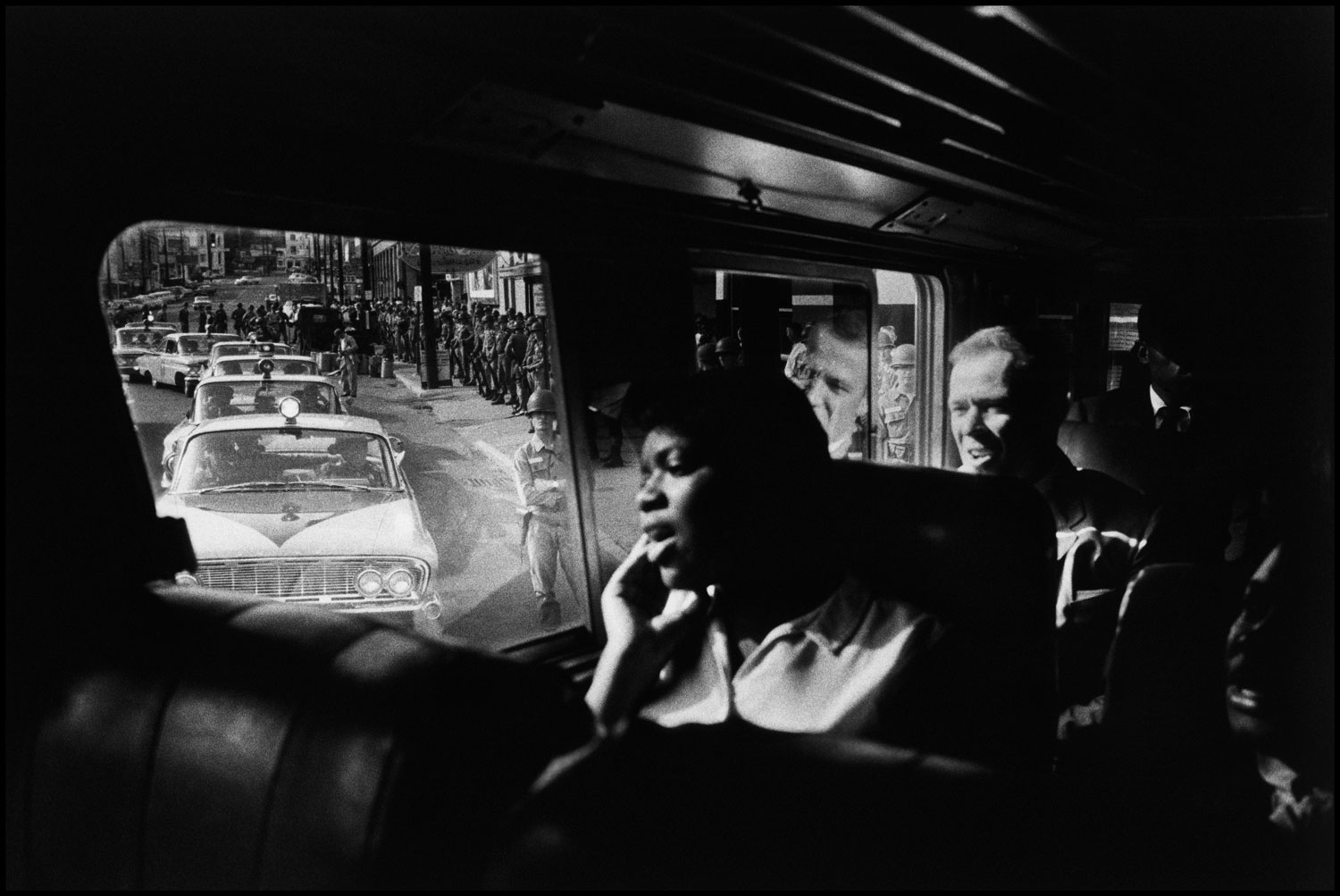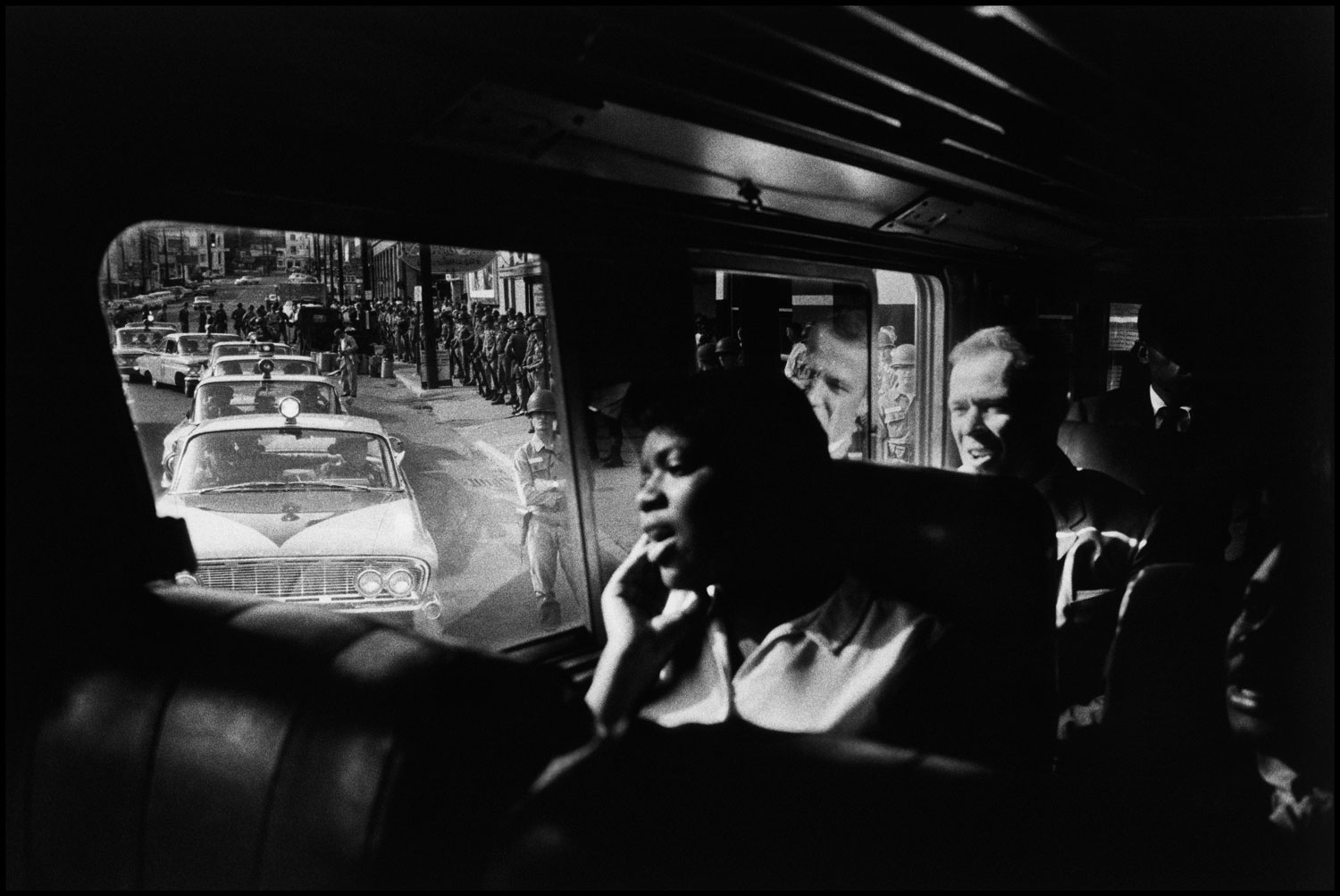
The Freedom Riders, a group of 13 students organized by Congress of Racial Equality (CORE), set out on Greyhound and Trailways buses on May 4, 1961 to ride from Washington, DC to New Orleans, intent on challenging the South’s segregation laws. When the first bus was firebombed, and the second attacked by a mob wielding iron pipes, the federal government had to step in and fly the students to New Orleans for their own protection.
In response to the violence, students across America stepped up, determined to finish what CORE had started. On the 24th of May, 27 students, ministers and activists set out to travel from Montgomery, Ala. to Jackson, Miss. Magnum photographer Bruce Davidson, having heard the news reports, flew South. Davidson admits he didn’t know what he would face. “I was brought up in the Midwest,” Davidson told TIME. “I didn’t have an understanding of what African Americans went through in the South.”
The photographer sat in on a secret trip-planning meeting at the home of a well-to-do local pharmacist, and the next day, despite having no official assignment, he stepped on the bus in Montgomery. “I’d never been afraid of anything,” says Davidson. “But I knew something awful was going on. I knew it was dangerous for me to be on that bus.”
Outside, armed National Guard soldiers stood by, forced by the government to provide protection. Crowds were jeering and shaking their fists. On the bus, the riders were singing as they began to roll out of town under escort. Tense and wary of their guards—after all, underneath the uniform they were Southern—neither Davidson, nor the riders, felt secure. All the way to Jackson they eyed the woods on either side of the highway uneasily. “Someone could have easily shot into the bus,” said Davidson. “I realized how incredibly brave the riders were.”
Stepping off the buses in Jackson, the riders were hustled into paddy wagons, under arrest for inciting riots, breaching the peace and failure to obey a police officer. They were the first group of some 400 students that would make the ride and be thrown into a maximum security prison for their peaceful protest. The day was a turning point for the photographer. “It sensitized me to something, something that needed to be recorded, something I had to bear witness to,” says Davidson, who would follow the movement for four years—photographing everything from Malcolm X to a bullet ridden car of a white woman who tried to advance the movement—right up until the Selma March. “I was able to see America in a way I’d never seen it before.”
This week the governor of Mississippi, Haley Barbour, finally apologized for the mistreatment the riders received at Parchman prison. “The ride was about an idea that could be changed,” says Davidson. “And it was changed. To some extent.”
—By Deirdre van Dyk. Produced by Crary Pullen.
To learn more about the Freedom Riders, check out the PBS’s American Experience, and the Atlanta Constitution Journal‘s special series.
To see more of Bruce Davidson’s civil rights work, visit Time of Change, an essay produced by Magnum in Motion.

More Must-Reads from TIME
- Cybersecurity Experts Are Sounding the Alarm on DOGE
- Meet the 2025 Women of the Year
- The Harsh Truth About Disability Inclusion
- Why Do More Young Adults Have Cancer?
- Colman Domingo Leads With Radical Love
- How to Get Better at Doing Things Alone
- Michelle Zauner Stares Down the Darkness
Contact us at letters@time.com